3 Simple Ways to Incorporate the Use of Games in the Classroom
School is supposed to be about learning, so why the use of games in the classroom? Have you ever heard someone ask this or wondered this yourself? Kids (and adults) LOVE games! Kids play games at recess, they play games at home, they may even play sports! So how do you incorporate the use of games in the classroom with the purpose of learning?
In This Post
I will discuss why games are an important piece of learning, how games help the brain learn and grow, and three ways to use games with your whole class in the forms of trivia, vocabulary practice, and using movement and board games.
No matter what you’re doing in class, be sure you are incorporating consistent routines. Get your free guide 5 Daily Must-Do Routines to Run Your Classroom Like a Pro. Just click this link or enter your name and email address to the right!
Disclosure: This post contains some affiliate links for your convenience. As an Amazon Associate I earn from qualifying purchases with no cost to you.
Why Use Games in the Classroom?
Teaching with games in the classroom is extremely fun and engaging. There are also some brain-based reasons for the use of games in the classroom.
The amygdala is an important part of our brains that tell us if something is a threat or not. The moment you tell your students, “We’re playing a game today!”, most of their amygdalas will tell the rest of their brains that “This will be fun! Let’s do it!”. That’s automatic engagement.
You’ll want to keep their brains in that state of happiness, so throughout your game, be sure to use a lot of encouragement and positive reinforcement. You can also add music to help with this.
Once you have their brains ready and they’re feeling safe and happy, is when the learning really begins! We mostly use games with our content after teaching it. So, this will be in the form of review and practice.
Students need to practice the material they have been taught within 24 hours for their brains to make neural connections. Games are a great type of practice because they will have to retrieve what they’ve learned and grow stronger connections.
When you group students together in teams, their brains release oxycontin, a bonding hormone. This gives their brains pleasure that they are in community with other students. And who doesn’t like to be with their friends, right?
So, why use games in the classroom? It’s fun, engaging, and their brains will make stronger neural connections of the material you taught them.
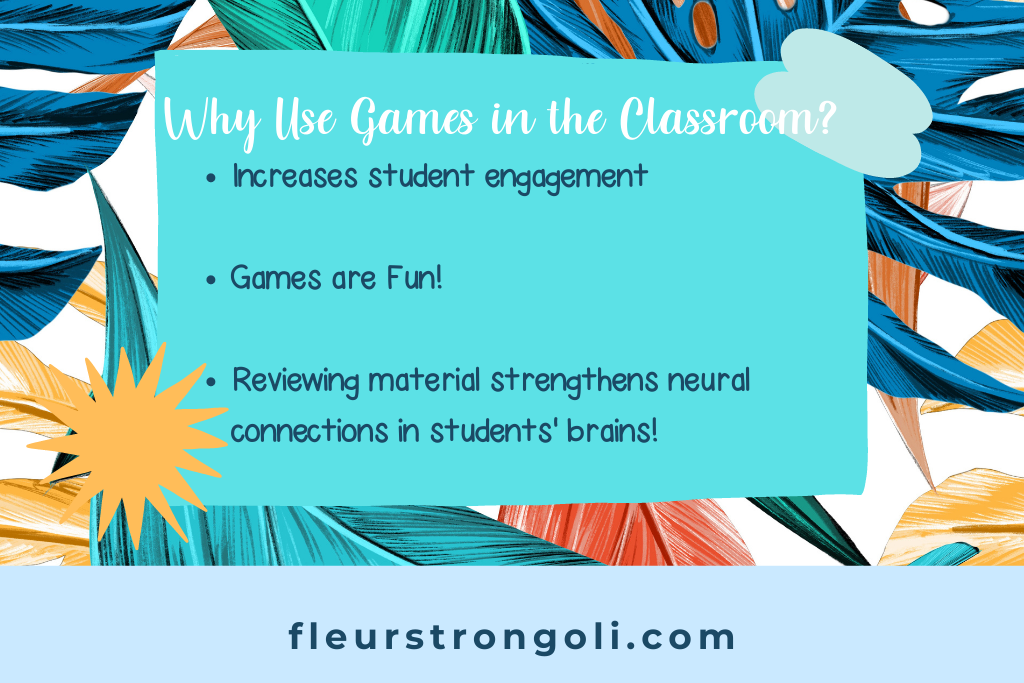
What Games Can You Play in the Classroom?
There are so many games you can play in your classroom. There are online games, games you may already own, and games you can purchase or create. Here are some ideas for whole class games.
Review or Trivia Games
When do you usually play review games? Many teachers play a game before a test for whole class review. I want to suggest that you play a review game as fun practice, just after teaching the concept, and then playing again as a review before a test.
You can purchase review games, such as Show What You Know About…games. I made these for my students to review in groups. I project the game on the screen, play some music, and set a timer. Students answer the questions in a specified amount of time, bringing me their answers. They have SO much fun with this! I incorporated retrieval of information (brains), teamwork (cooperative learning), music (also good for their brains), and movement (good for their brains and bodies)! You can click here to see the games I have created!
You can also use free online games, and you can also pay to have more features. Popular game sites are Kahoot, Blooket, and Gimkit. I use Gimkit in my classroom. I pay for it once a year, and my students LOVE it when we review for their tests. There are so many different types of games to play in Gimkit. You just need to have enough computers for the whole class to play.
You can also create your own trivia games using templates. I’ve used Jeopardy style games in my classrooms before. Those are a lot of fun too!
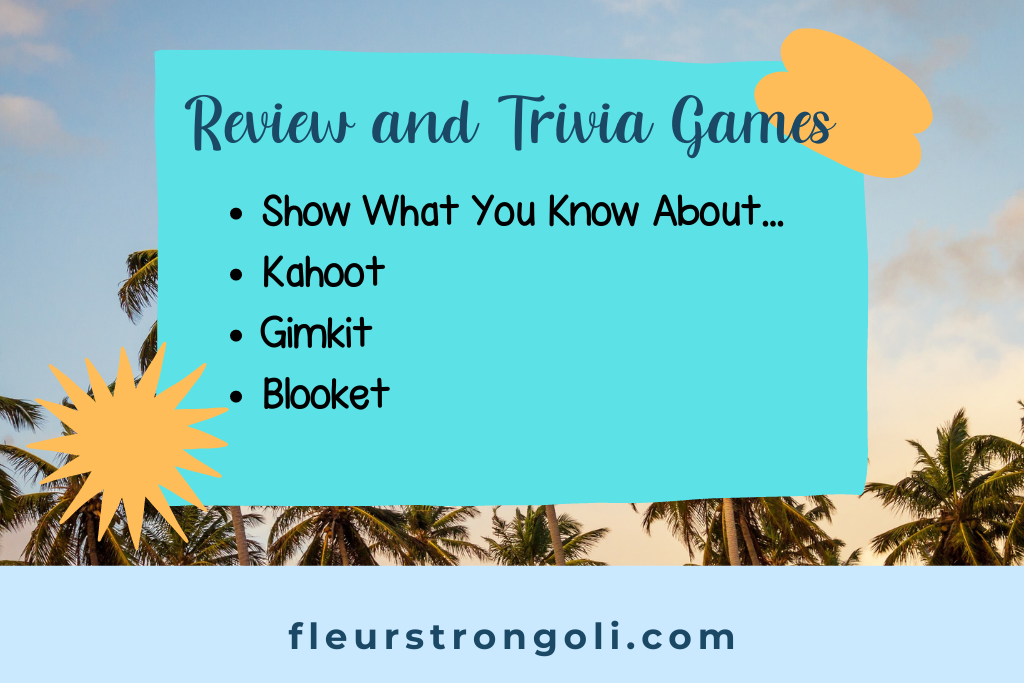
Vocabulary Games
Learning, using, and practicing vocabulary words are important in all subject areas. My students make flash cards of our Science vocabulary words, and we use them in review games. I have my students quiz each other with their cards.
You can make a Memory game with vocabulary words. Put each word on a card and the definition on a separate card. Then have students turn them over, and match the word and definition.
You can also make a BINGO game. The easiest way is to print out a 4×4 or 5×5 table. Post a list of words, and have the students fill in their tables. Then give definitions and have students mark the word on their table.
I like to use white boards with my students in a White Board Review Game. I put the definition on my screen (using my flash cards), and students write the word on their whiteboard. It’s a great way to quickly see who has a grasp of the words.
Finally, you can play Quizlet Live with your students. Quizlet is another site where you and the students can make study sets. They have games that the students can play on their own to practice their words, and you can host a Quizlet Live game.
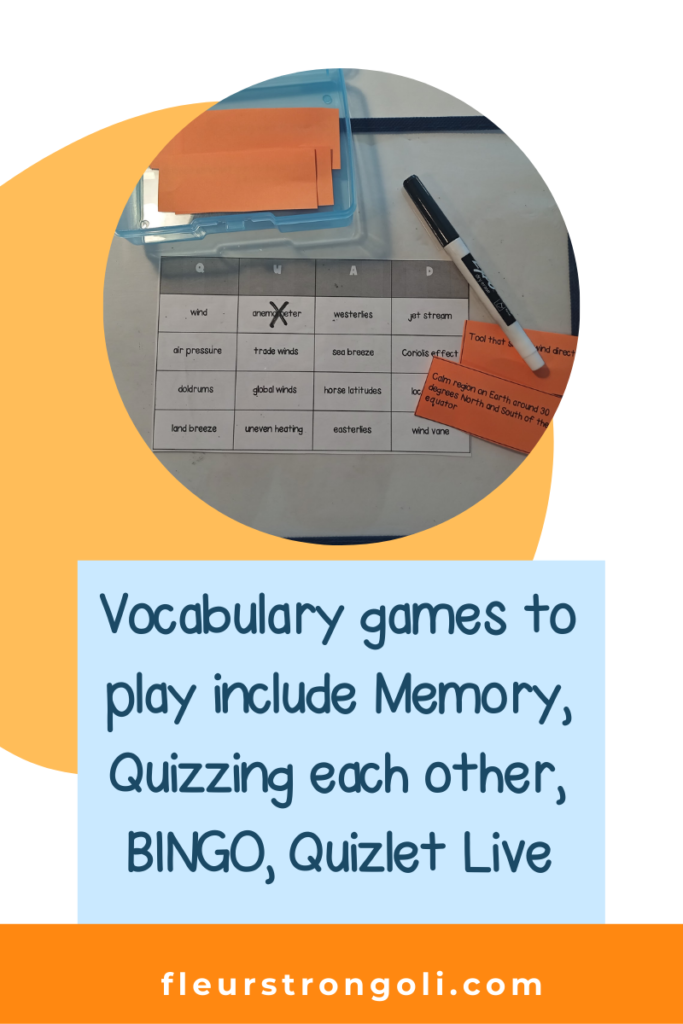
Using Task Cards in Games
Task cards are such an engaging way to practice content. You can do more than just assign it to your students. You can use them in games! Read my blog post for more ideas on using task cards in the classroom.
To encourage movement, you can post the task cards around the room. Students will find the cards and answer them as they walk around.
You can also add them to popular board games you may have in your classroom. For our middle schoolers, you could use games like Sorry, Trouble, or Jenga. In order to take their turn, they have to answer a task card correctly.
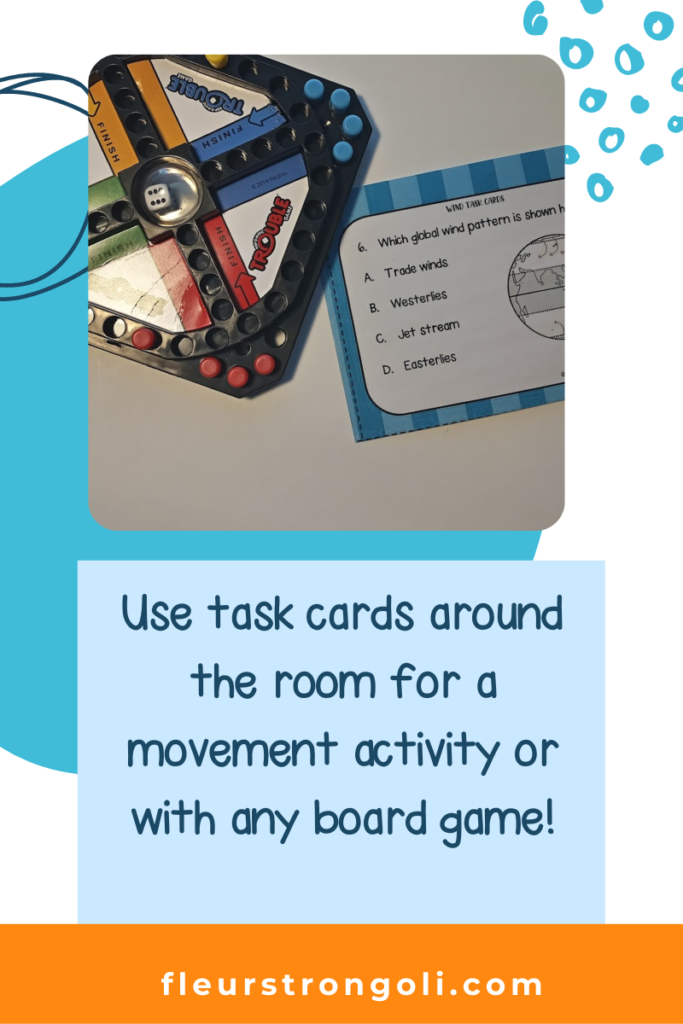
Wrap Up
I shared a lot of ideas on how to incorporate the use of games in the classroom! You can play review or trivia games, vocabulary games, and use task cards in your games. Review games like Show What You Know About…, Kahoot, Gimkit, or Blooket are very fun and engaging. You can easily create games for vocabulary like Memory, Bingo, and white board review games, and use Quizlet Live. And task cards can be added to just about any board game. Read more about learning with games from my friend Amanda at the Sci-Ed Teacher.
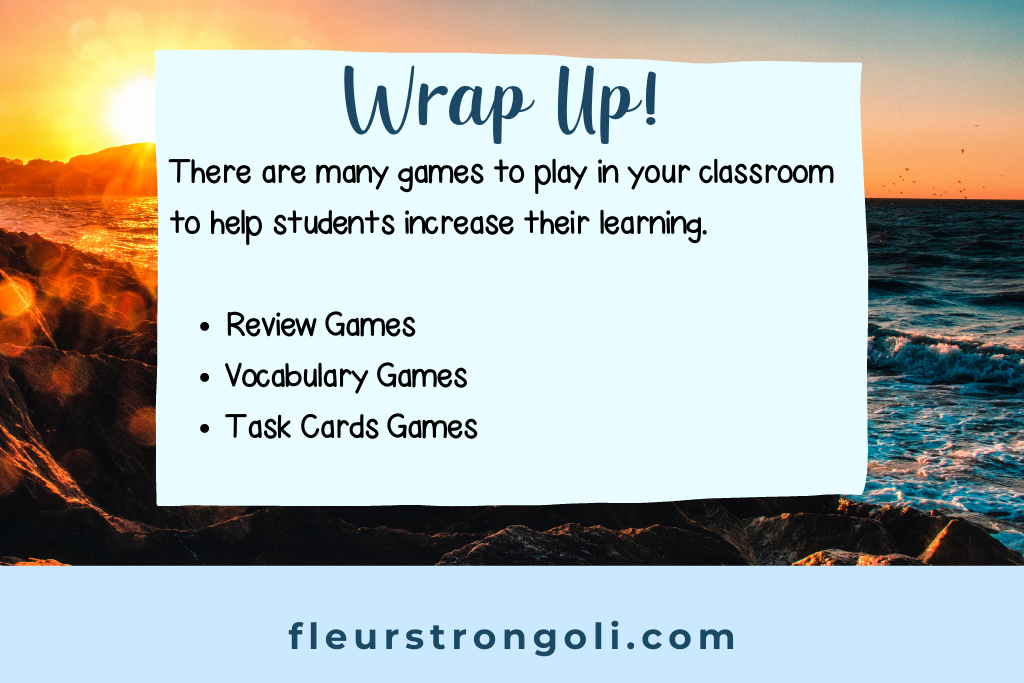
Your Turn
I hope you have a lot of ideas on how you can add games to your regular routine. What games have you played? What games will you add to your units? I’d love to hear so please comment or email me!
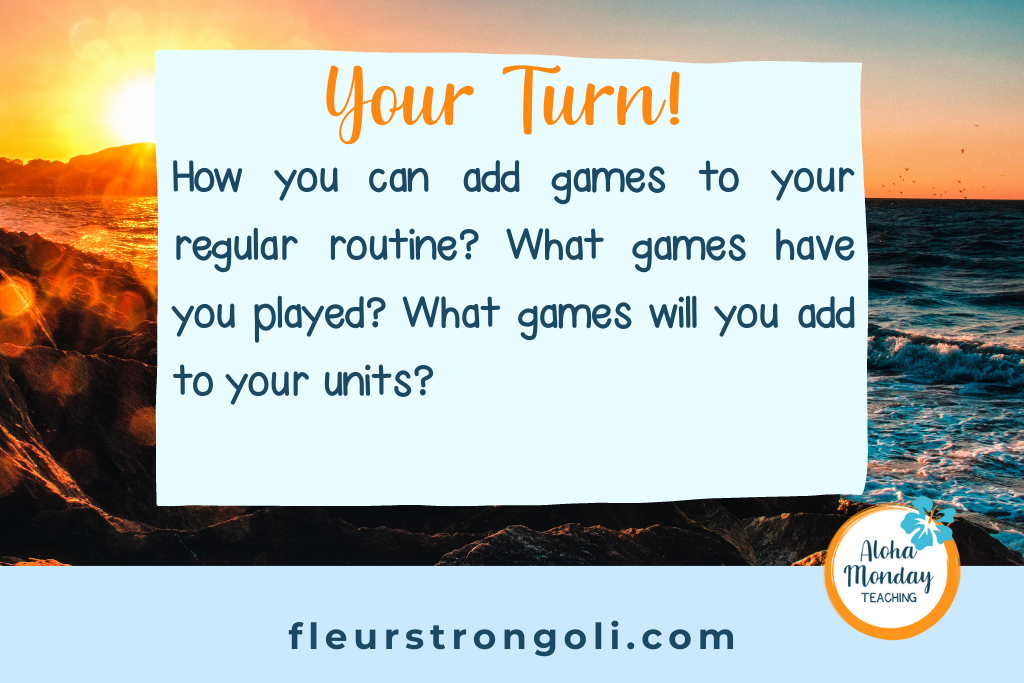
Read More
5 Engaging and Easy Tips on How to Use Task Cards
3 Helpful and Quick Methods for Learning with Games in Middle School by my friend Amanda at The Sci-Ed Teacher

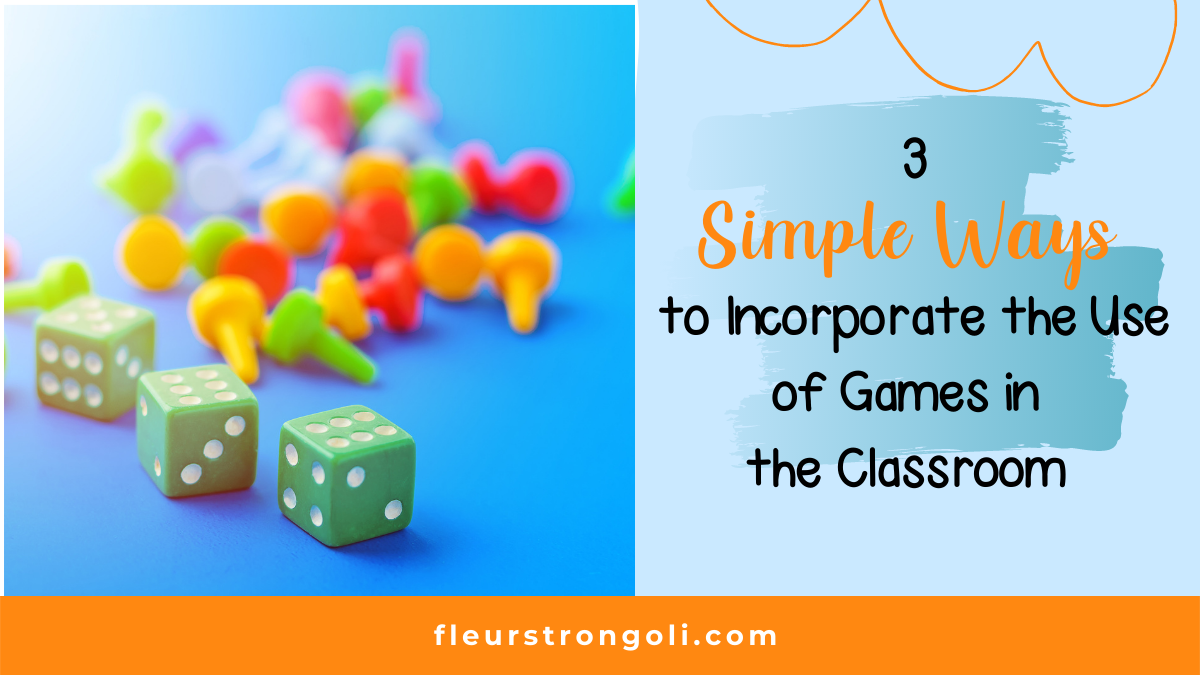

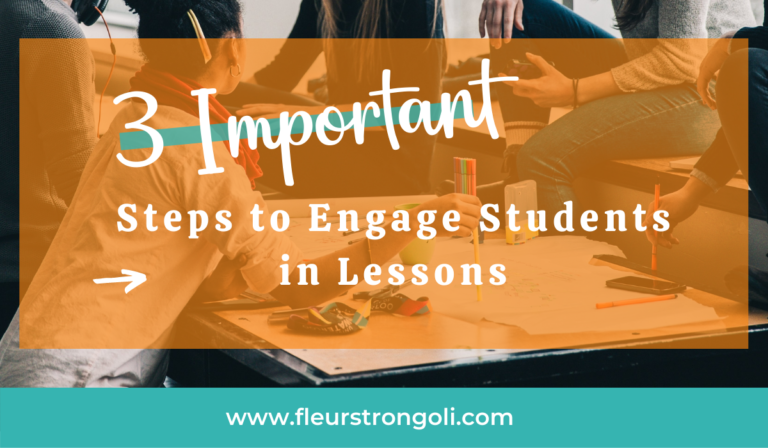
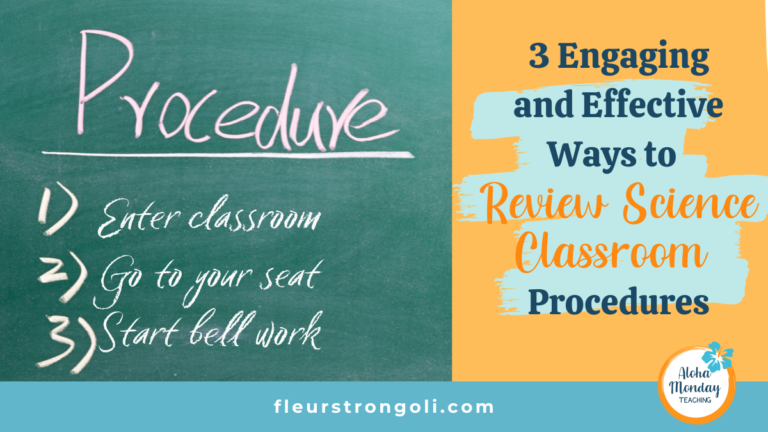
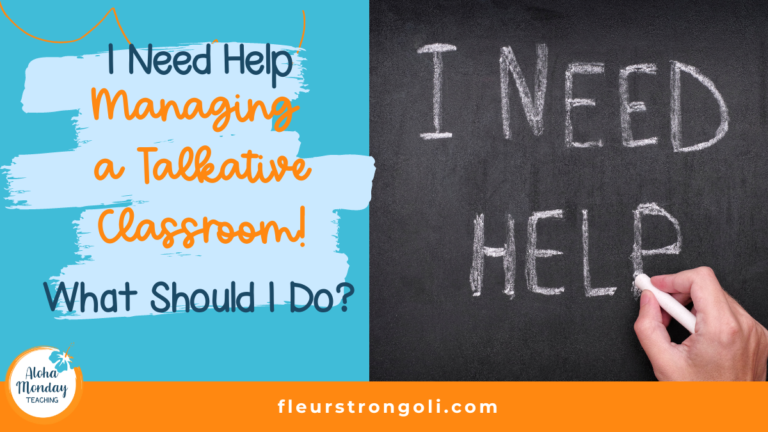
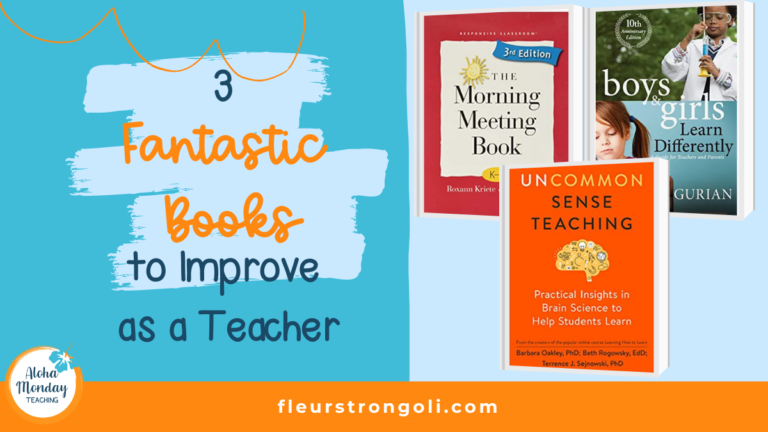

3 Comments